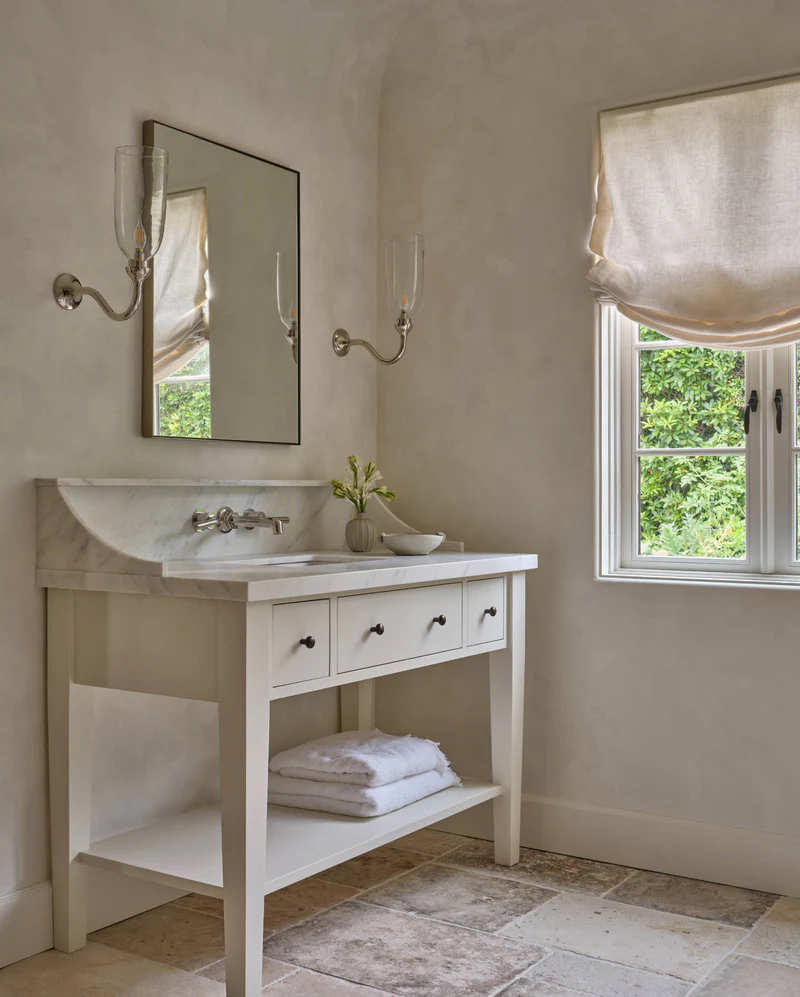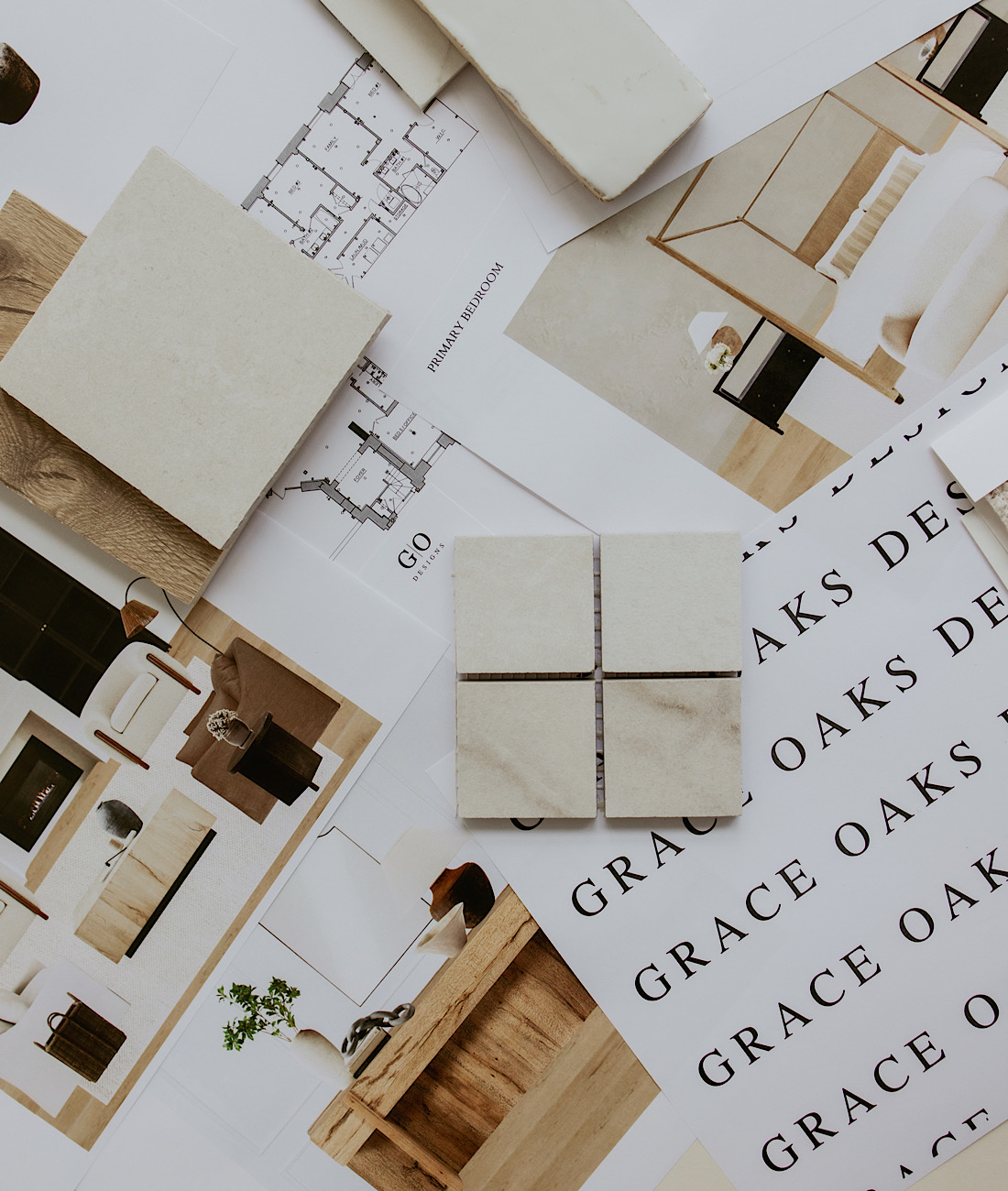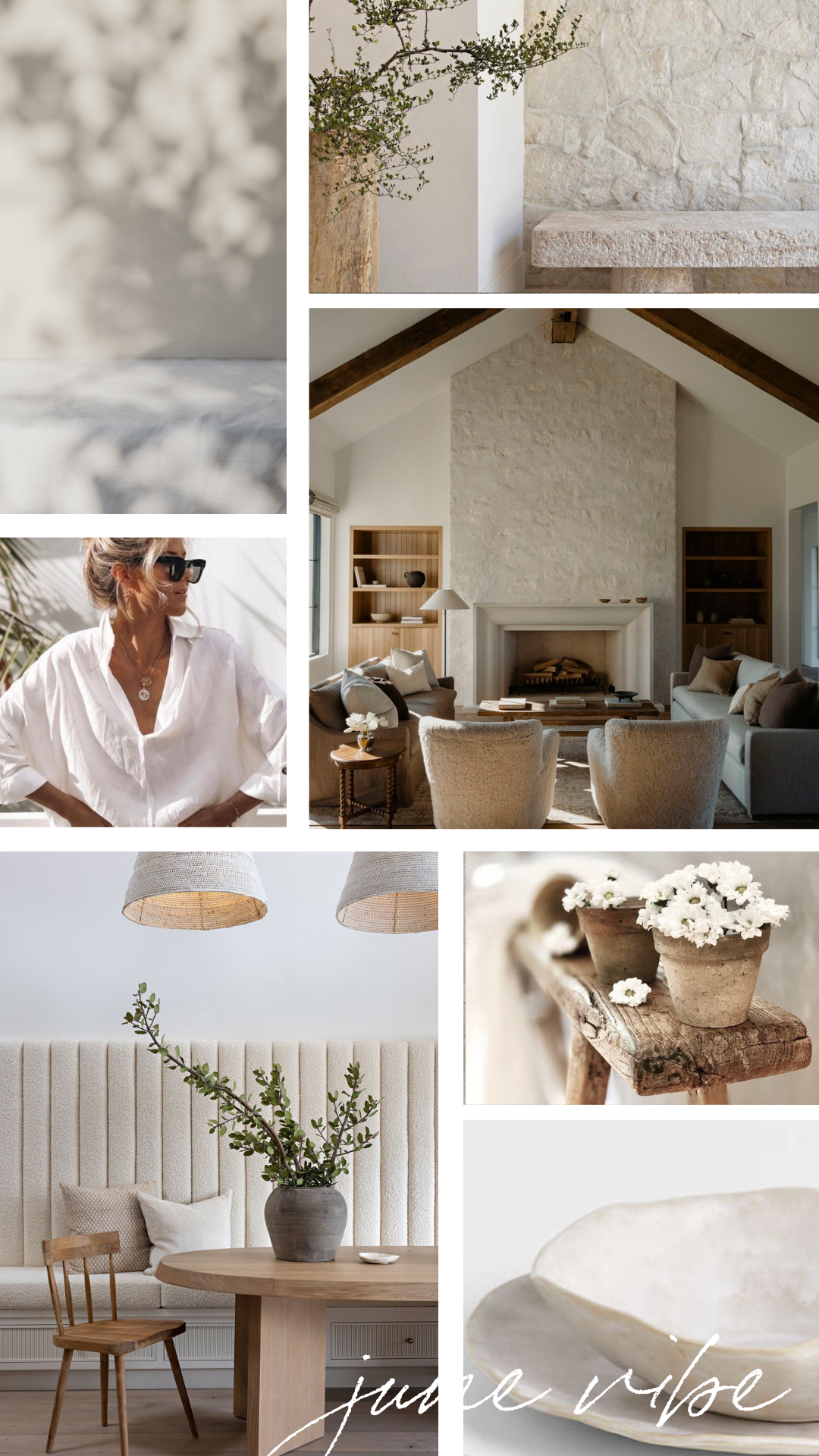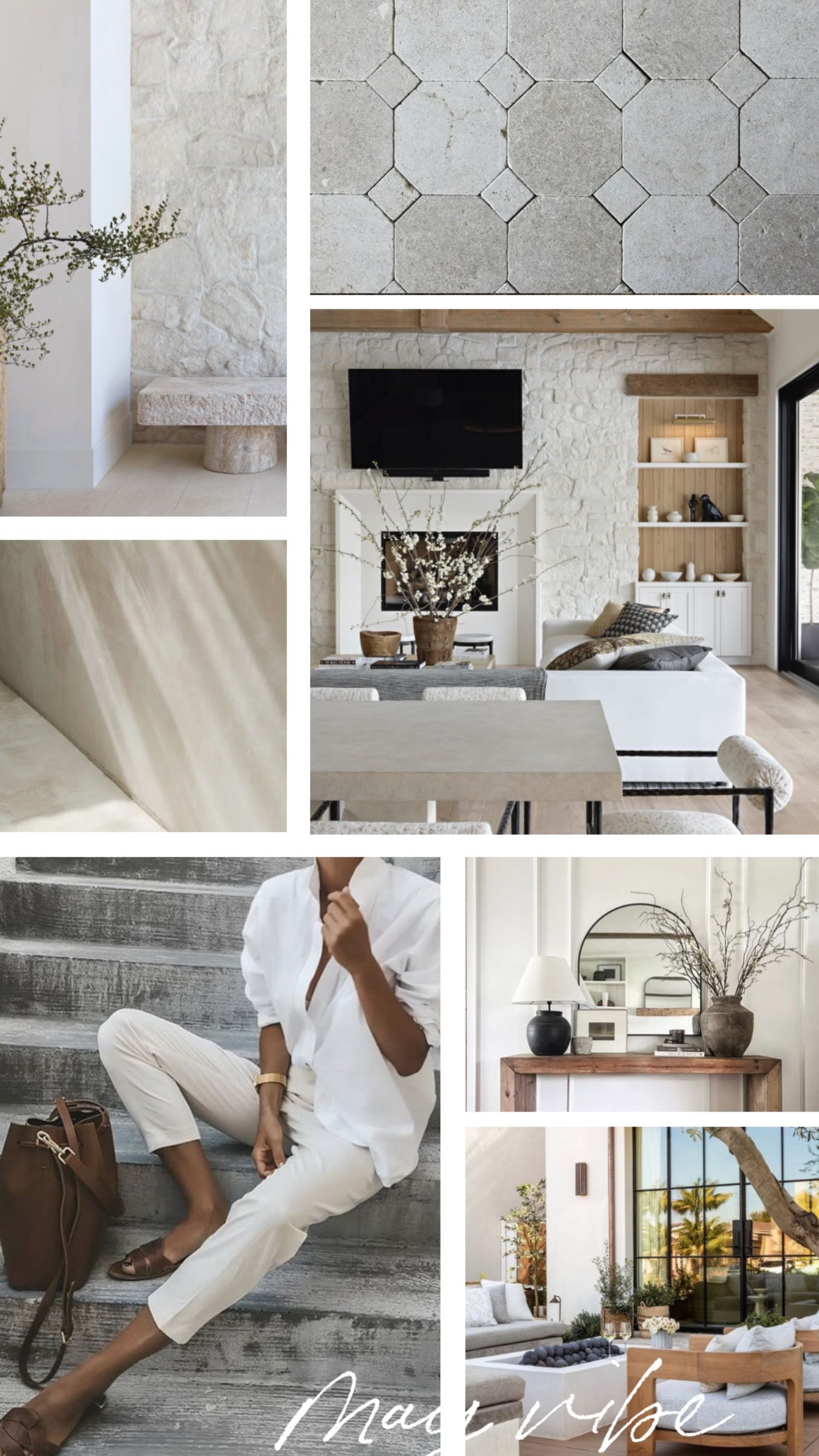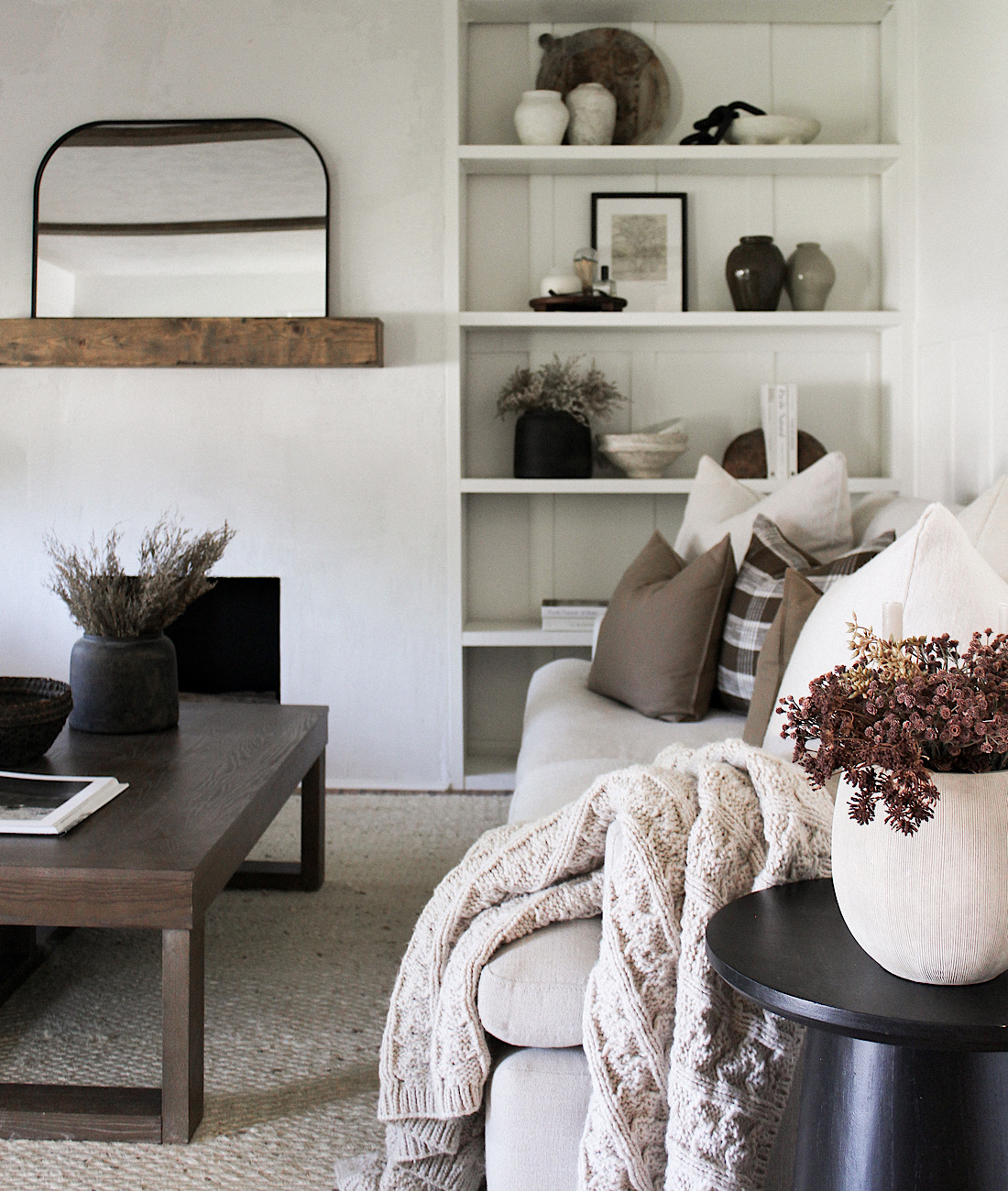Just like with fashion, interior trends make waves each year. Making a huge splash this year in popularity is Quiet Luxury. Continue reading below all about what Quiet Luxury is, examples of this understated style, and ways to achieve the look in your own spaces. Plus, whether I think this trend is here to stay or will quickly pass on by.

Quiet Luxury – What It Is
To put it simply, it’s exactly what it says. Subtle luxury, understated, simple. Quality materials. Rather, it’s more about understated than in your face designer labels. It’s the quality of materials and finishes, how they’re made, where, and combining it all to create a space that speaks to richness in a soft way – it isn’t yelling “I’m expensive and Designer.”


It isn’t necessarily a style or look, but more about a focus on quality. In all aspects. The rituals and everyday life moments, how to elevate the overall experience. That’s quiet luxury. Why use a regular dish sponge when you can have a beautiful marble tray with a wood scrubber that instantly looks like a piece of kitchen decor? It’s beautiful, it’s elevated, it’s functional. This is Quiet Luxury.

To relate it to fashion think the classic black dress- she’s timeless, simple, elegant. Paired with a beautiful statement earring or heel. The accessory doesn’t steal the show. The black dress elevates the whole look. It’s the same for interiors. The accents added to a space matter. They add to the look but don’t take away.

Often, editing down the space is important to achieve this look in the best way. It’s about simple pairings, natural materials, rich fabrics, and lasting finishes. Home design with quiet luxury in mind should be highly layered focusing on textures, timeless furniture and wood tones, quality materials, muted and neutral tones without boldness and less prints.

It’s the opposite of minimalist which can feel sparing and cold. Quiet Luxury embodies a layered and intentional home but doesn’t feel overly done or cluttered. Exactly how I like to approach each of my designs.

Quiet Luxury is timeless, it’s the thoughtful consideration of material, color palette, and construction of a space. The details, it feels intentional and meaningful. So, that any piece that is brought in feels elevated because of the surroundings. This approach to design is turning the whole market on it’s side. Quiet Luxury is quickly becoming so sought after because it feels like a breath of fresh air. In a highly consumable age more and more are craving timeless, quality, lasting pieces. Less quick to phase out and more intentional curation.

I think Quiet Luxury and Organic Modern go hand in hand. A few additional layers in the design and intentional thinking behind each product lends to quiet luxury. It’s more about those natural materials: marble, stones, woods, patina brass, etc. The space should feel warm and inviting but the color palette very neutral and soothing just like Organic Modern. All the organic materials that create this aesthetic are used in quiet luxury. What’s added here is rich materials like velvet, silk, luxe linen, etc. Interesting and bold lighting, craftsmanship furniture, and understated custom or personalized details.

“It’s the perfect blend of simplicity and refinement.” – Hillary Quinn, Grace Oaks Designs
Wall texture and mouldings, craftsman detail work really highlight this design style. An added fluted or bead cabinetry detail, crown moulding, or craftsman wall trim speaks to quiet luxury. We know it’s an intentional part of the design, but it isn’t in your face. It’s subtle yet adds so much to the overall home.

How To Add Quiet Luxury In Your Home
It isn’t as expensive or daunting of a task as it may seem. Think about the quality and type of materials you could add to your space. Fast decor is a thing of the past. In quiet luxury we’re paying attention to details, and even vintage/antique pieces. Aged or patina’d is even better. Those pieces that get better with age, and stand the test of time. Quality over quantity.

What’s interesting is it often relates to our current times. So what’s trending in interiors often is derived by what we’re feeling and craving in our experience. Less is more, quality, and quiet and slower paced experience. This is why I love this design approach it emphasizes how each space should feel. Which at the core is my design philosophy. So, I’d argue this isn’t a trend or style altogether. It’s a design approach and one that’s here to stay.

Would you agree? Do you like this design approach and do you think it’s here to stay?
